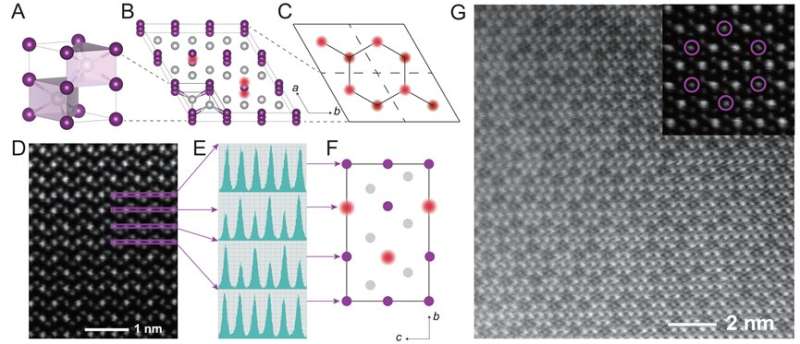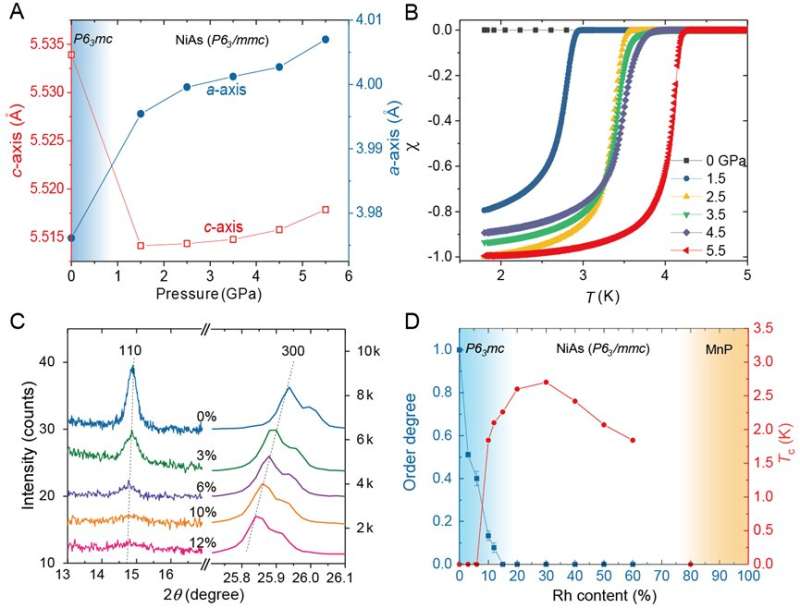Superconductivity from buckled-honeycomb-vacancy ordering

Crystals inherently possess imperfections. Vacancies, as the simplest form of point defects, significantly alter the optical, thermal, and electrical properties of materials. Well-known examples include color centers in many gemstones, the nitrogen-vacancy center in diamond, vacancy migration in solid-state batteries, and the metal-insulator transition in phase-change materials. The vacancies in these cases are in frame-works with no or weak interactions. However, the role of vacancies in strongly correlated materials is thus far unclear due to the lack of an ideal prototype.
Strongly correlated vacancy ordering has long been anticipated to harbor exotic physics, such as superconductivity. The K-Fe-Se superconductor has been a hot research subject in recent studies for an important reason, viz., the existence of an insulating iron-vacancy-ordering phase. However, this vacancy-ordering phase has been proven to coexist with the superconducting phase at the nanoscale, and is not responsible for the superconductivity. Whether correlated vacancies could become a new type of superconducting parent phase is an unanswered question. Iridates, with comparable and competing energy scales of the on-site Coulomb repulsion, crystal field and spin-orbit coupling, are a platform of rich structures and physical properties.
Recently, a joint research team from Yanpeng Qi group from ShaihaiTech University and Hosono group at the Tokyo Institute of Technology, discover an unprecedented vacancy state in Ir16Sb18, forming an extended buckled-honeycomb-vacancy (BHV) ordering. Superconductivity emerges by suppressing the BHV ordering through squeezing of extra Ir atoms into the vacancies or isovalent Rh substitution. The phase diagram reveals that the superconductivity competes with the BHV ordering, which ranks it as the first superconducting parent phase with correlated vacancies. Further theoretical calculations suggest that this ordering originates from a synergistic effect of the vacancy-formation energy and Fermi surface nesting with a wave vector of (1/3, 1/3, 0). The buckled structure breaks the crystal inversion symmetry and can mostly suppress the density of states near the Fermi level. This study suggests that the ordered vacancy can be a new degree of freedom for the manipulation and study of quantum materials. Further investigation of how the vacancy intertwines with other conventional degrees of freedom like lattice, spin and orbital, and their influence towards the properties of the materials will be fascinating and hold promise for novel discoveries in physics.

More information: Yanpeng Qi et al, Superconductivity from buckled-honeycomb-vacancy ordering, Science Bulletin (2020). DOI: 10.1016/j.scib.2020.12.007
Provided by Science China Press





















